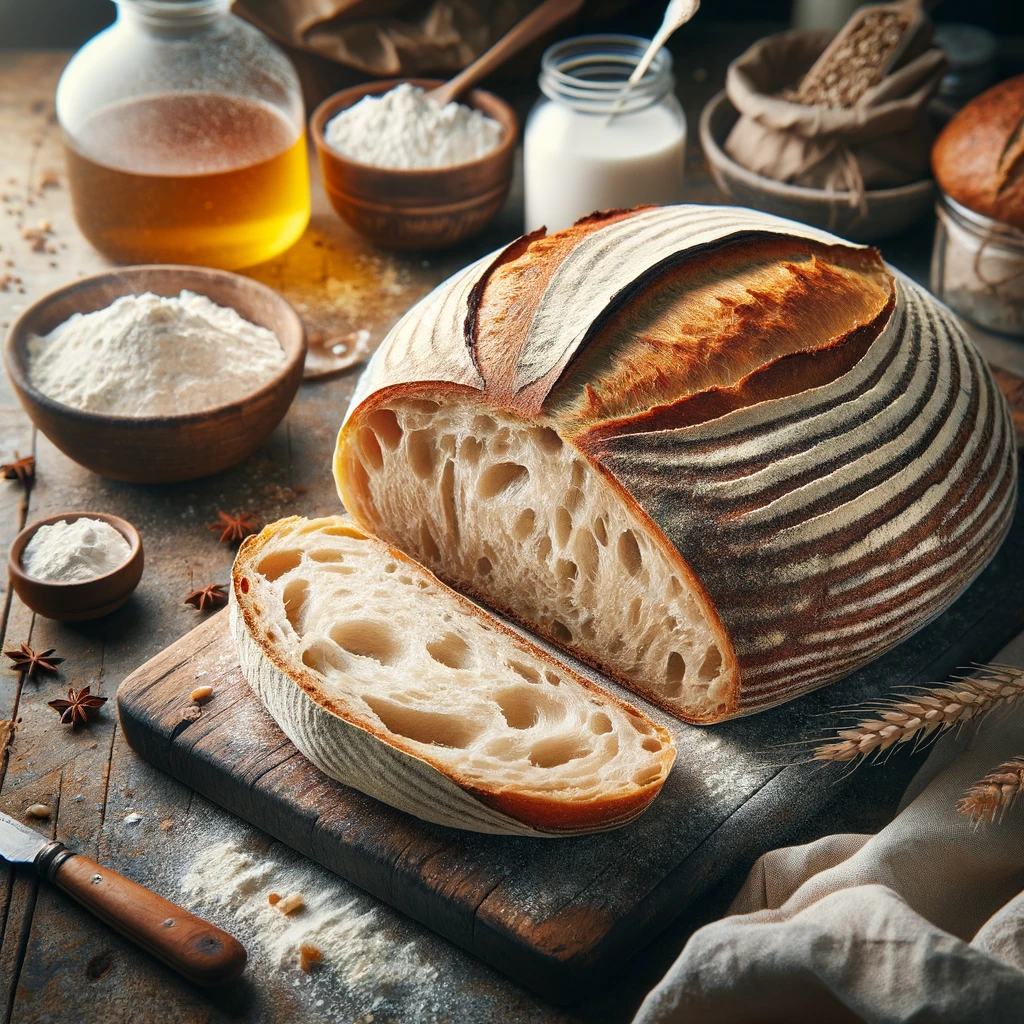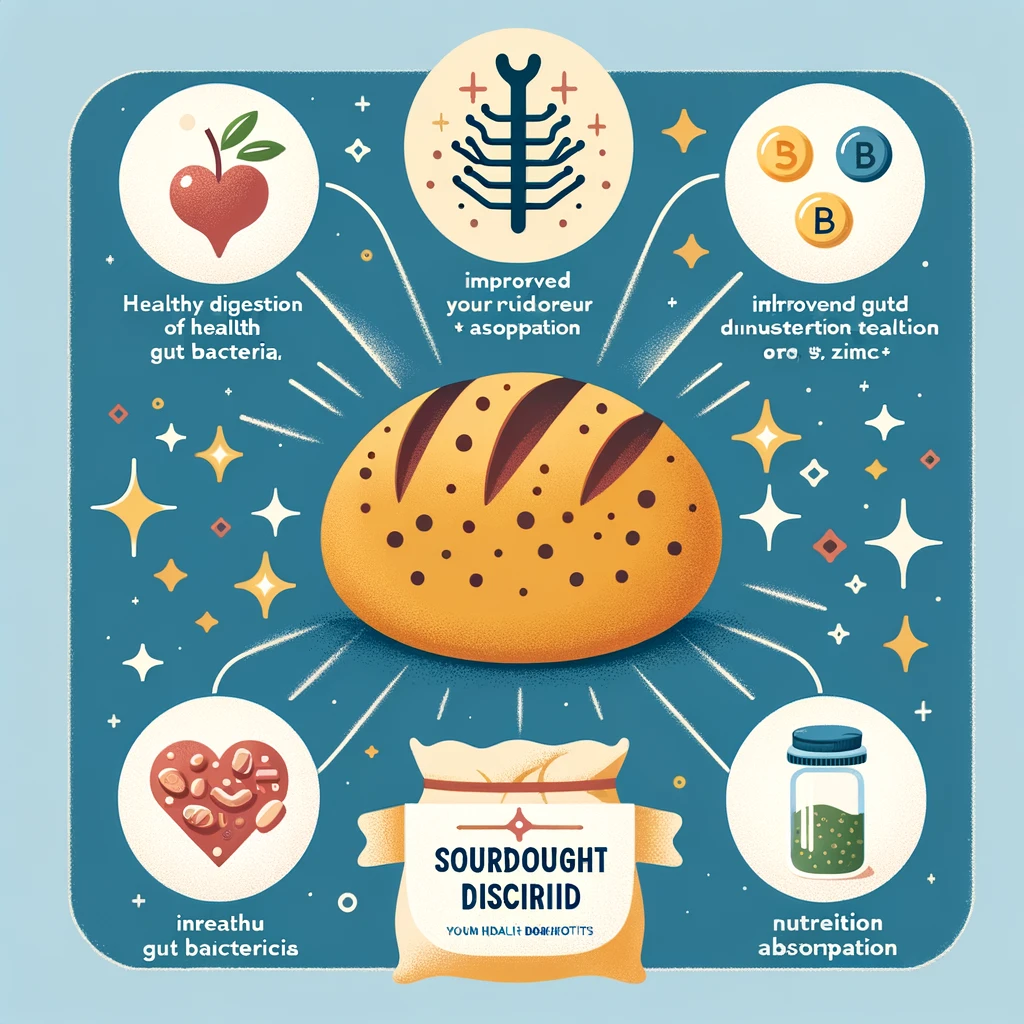Embarking on the sourdough journey introduces us to the magical world of fermentation, where each step is a dance between tradition and innovation. At the heart of this culinary ballet lies a question many enthusiasts grapple with: “What can I do with day 3 sourdough discard?” In this comprehensive guide, we’ll delve deep into the essence of sourdough discard, uncovering its potential beyond mere waste. From nutritional benefits to culinary delights, this article aims to transform your baking routine, ensuring your sourdough journey is as sustainable as it is delicious. Let’s embark on this flavorful expedition, where each breadcrumb tells a story of creativity, sustainability, and gastronomic pleasure.
Discovering the Potential of Discard

The Basics Unveiled
At its core, sourdough discard is a byproduct of the sourdough starter’s feeding process. This seemingly mundane substance is, in fact, a testament to the living nature of sourdough, encapsulating a complex ecosystem of yeast and bacteria. Every time bakers feed their starter, they’re essentially curating this microbial environment, ensuring the balance is just right for bread that’s not only delicious but also full of character.
Yet, amidst this cycle of feeding and growth, bakers are often left pondering, “What can I do with day 3 sourdough discard?” It’s a valid question, as discarding feels counterintuitive in a world increasingly focused on sustainability. Here, we’ll explore not just the what but the why—illuminating the discard’s hidden virtues and transforming what was once considered waste into a pillar of resourceful baking.
The Third-Day Magic
Why focus on day 3? It’s a pivotal moment in the life of a sourdough starter, a time when the microbial activity is bustling, yet not quite at its peak for leavening bread. This makes the discard from this period uniquely versatile, suitable for a range of culinary applications that benefit from a hint of sourdough’s tangy depth without the need for a strong rise.
In this section, we’ve laid the groundwork, sketching a portrait of sourdough discard that challenges us to see beyond its humble beginnings. As we move forward, we’ll dive into the myriad ways this ingredient can enrich our baking and cooking, proving that with a bit of creativity, the possibilities are endless.
Nutritional and Culinary Advantages

Unleashing the Potential of Sourdough Discard
Embarking further into the realm of sourdough discard, we find ourselves at the crossroads of tradition and innovation. The question, “What can I do with day 3 sourdough discard?” opens a Pandora’s box of culinary opportunities, challenging us to rethink our approach to this fermented treasure.
Nutritional Benefits
One of the most compelling reasons to harness the power of day 3 sourdough discard lies in its nutritional profile. Fermentation, the heart and soul of sourdough, not only imparts a distinct flavor but also enhances the bioavailability of nutrients. The lactic acid bacteria present in the discard play a pivotal role in breaking down phytates, thus increasing the absorption of minerals such as iron, zinc, and magnesium. Furthermore, incorporating sourdough discard into your recipes adds a subtle boost of probiotics, fostering a healthier gut microbiome.
Flavor Enhancement in Baking
Beyond its nutritional perks, day 3 sourdough discard serves as a secret weapon in the baker’s arsenal, adept at elevating the flavor complexity of a wide array of baked goods. Whether you’re crafting a batch of rustic crackers, tender pancakes, or a velvety cake, the discard infuses each bite with a nuanced tanginess, adding layers of depth that are simply unattainable with commercial yeast alone. This is where the magic of day 3 discard truly shines, transforming ordinary recipes into extraordinary culinary experiences.
As we’ve journeyed through the value of day 3 sourdough discard, it’s clear that this byproduct is far from ordinary. Its nutritional benefits and unparalleled flavor enhancement capabilities make it an indispensable ingredient for the modern baker. Now, as we venture into the next chapter of our exploration, we’ll uncover the myriad creative uses for sourdough discard, further illuminating the path from waste to wonder.
Creative Uses for Sourdough Discard

Diving into the heart of creativity, we find that day 3 sourdough discard is not just an ingredient; it’s a muse, inspiring bakers to push the boundaries of traditional baking. The versatility of sourdough discard opens up a playground of culinary possibilities, answering the ever-persistent query, “What can I do with day 3 sourdough discard?” with a resounding chorus of options.
Savory Recipes
The realm of savory delights offers a rich tapestry for sourdough discard to weave its magic. Consider, for instance, the humble pizza dough, transformed by the tang and texture of discard into a masterpiece of flavor and crunch. Or envision a batch of artisan crackers, each bite a perfect harmony of sourdough’s tanginess and the bold flavors of herbs and cheese. The discard can rejuvenate traditional recipes like pancakes and waffles, turning breakfast into a celebration of complex flavors and perfect textures. Discover a variety of recipes from breakfast to dessert that showcase the discard’s versatility here.
Sweet Treats
Turning our gaze to the sweeter side, sourdough discard proves to be equally adept at enchanting desserts. Imagine a classic chocolate cake, where the discard introduces a subtle tang that balances the sweetness, enhancing the chocolate’s richness. Or picture delicate muffins and quick breads, where the discard’s acidity tenderizes the crumb, resulting in baked goods that are moist, tender, and utterly irresistible.
In every dollop of discard lies an opportunity to elevate and innovate, transforming the mundane into the extraordinary. As we’ve journeyed through the various ways to utilize day 3 sourdough discard, it becomes evident that this byproduct is a treasure trove of culinary potential. Next, we’ll explore how to store and manage your sourdough discard, ensuring that this precious resource is always at the ready for your baking adventures.
Storing and Managing Sourdough Discard
Storing and managing sourdough discard correctly is crucial. It ensures it’s ready for use whenever inspiration strikes. Here, we’ll explore the best practices for keeping your discard fresh.
Short-Term Storage Tips
For those using their discard within a week, refrigeration is key. Place it in an airtight container in the fridge. Don’t forget to label it with the date. This method slows fermentation and preserves flavor.
Before using, let the discard reach room temperature. This helps it blend smoothly into your recipes.
Long-Term Storage Methods
If you have more discard than you can use soon, freezing is a great option. Divide the discard into portions and store each in a freezer bag. Label them with the date and amount. Frozen discard can last for months.
Thaw frozen discard in the fridge overnight or on the counter for a few hours. Stir it well before use, as separation might occur.
These storage tips make managing sourdough discard easy. They ensure you can enjoy its unique flavors in your baking anytime.
In the next section, we’ll answer common questions about sourdough discard. Our goal is to help you bake with confidence and creativity.
Enhancing Recipes with Sourdough Discard
Before we delve into frequently asked questions about sourdough discard, let’s explore how this versatile ingredient can elevate your baking and cooking repertoire. Whether you’re a novice baker or a seasoned chef, incorporating sourdough discard into recipes adds a unique twist that can transform the ordinary into the extraordinary.
Baking with Discard
Sourdough discard adds moisture and tenderness to baked goods, making it perfect for cakes, muffins, and bread. For example, adding discard to banana bread not only enhances its flavor but also improves its texture, resulting in a moister, more delicious loaf. Similarly, sourdough pancakes become fluffier and more complex in taste with the addition of discard.
Cooking with Discard
But the magic of sourdough discard isn’t limited to baking. It can also be a game-changer in your cooking. From thickening sauces to creating tangy marinades, the discard introduces depth and richness to various dishes. Imagine a creamy Alfredo sauce with a hint of sourdough tang, or a batch of fried chicken marinated in discard for an extra flavor kick.
Incorporating sourdough discard into your culinary creations opens up a world of flavor possibilities. As we transition to addressing the most common questions about working with discard, remember that this versatile ingredient can help you push the boundaries of both traditional and innovative recipes.
Preserving and Sharing Sourdough Culture
After exploring the diverse culinary uses of sourdough discard, let’s consider the broader implications of sourdough baking: preserving a culinary tradition and fostering community. Sourdough isn’t just about baking bread; it’s a living link to our past and a gift we can share with others.
Cultivating a Legacy
Sourdough starters are ancient cultures, passed down through generations. By maintaining a starter and utilizing the discard, you’re not just baking; you’re participating in an age-old tradition. Each loaf tells a story, connecting us to bakers from centuries past. In this way, sourdough discard becomes more than an ingredient—it’s a piece of history.
Sharing with the Community
The act of sharing sourdough discard with friends, family, or even strangers embodies the spirit of community inherent in sourdough baking. Whether you’re giving away discard for others to start their own baking journey or baking loaves to share, you’re spreading not only delicious food but also kindness and connection. This communal aspect of sourdough baking enriches our lives, bringing people together over the shared love of good bread.
In embracing sourdough discard, we do more than enhance our recipes; we also preserve a rich baking heritage and nurture bonds within our communities. As we move forward to address common questions about sourdough discard, let’s keep in mind the profound impact of our baking practices beyond the kitchen.
FAQs on Sourdough Discard
As we delve deeper into the intricacies of sourdough baking, a plethora of questions naturally emerges, particularly regarding the optimal utilization of our sourdough discard. Consequently, this section is dedicated to unraveling some of the most pressing inquiries, aiming to refine your baking practices with insightful clarity.
Can I Start a New Sourdough Starter with Discard?
Absolutely, day 3 sourdough discard is an excellent base for beginning a new sourdough adventure. It’s perfect for experimenting with different flour types or cultivating a backup starter. For detailed guidance on starting and maintaining a healthy sourdough starter, The Perfect Loaf offers comprehensive advice and tips.
How to Know if Sourdough Discard is Still Good?
Fortunately, your senses are remarkably adept tools for assessing the condition of your sourdough discard. Ideally, it should exude a pleasantly tangy aroma, reminiscent of yogurt or buttermilk, and display a creamy, uniform texture. Should you encounter any unusual odors, discolorations, or signs of mold, it’s prudent to err on the side of caution by discarding it and commencing anew. After all, the caliber of your discard directly influences the flavor and texture of your culinary creations.
Adjusting Recipes for Sourdough Discard Use
Incorporating sourdough discard into recipes is a fantastic way to reduce waste while adding depth to your baked goods. Remember, since discard is essentially flour and water, you’ll need to adjust the amounts of these ingredients in your recipes accordingly. For inspiration and specific recipes that make great use of sourdough discard, JB Recipes features a variety of options from breakfast to dessert.
By addressing these FAQs with added transition words for smoother readability, we not only deepen our comprehension of sourdough discard but also empower you to navigate your baking endeavors with renewed confidence and inventiveness. Whether embarking on the creation of a new starter, evaluating the freshness of your discard, or modifying recipes to incorporate this tangy ingredient, the array of opportunities is boundless.
In conclusion, our journey through the world of sourdough discard reveals its multifaceted value as both a versatile ingredient and a testament to sustainable baking practices. Through careful management, imaginative application, and a dash of culinary curiosity, sourdough discard can significantly elevate the quality of your baking, transforming the ordinary into the extraordinary. Here’s to embracing every aspect of your sourdough adventure, ensuring that nothing goes to waste. Happy baking!
